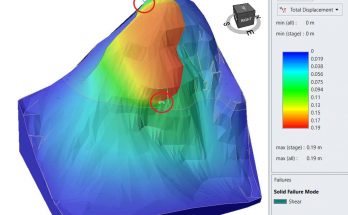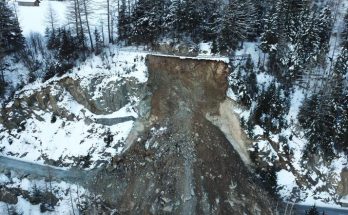Jérémie Voumard
Supervisor : Prof. Michel Jaboyedoff
Experts : Dr. Marc-Henri Derron, Dr. Luuk Dorren, Olivier Caspar
The main theme of this Master thesis is the calculation of risk generated by natural hazards on roads. While it is common to assess risk incurred by the road users through static calculations, a new approach based on a dynamic calculation of risk is proposed here. Risk is usually calculated at a so-called macroscopic scale, i.e. with general parameters representing the road and its related traffic. The new approach presented here is to consider the traffic at a microscopic scale, taking into account risk for each vehicle traveling on the road. This new dynamic approach ensures a more realistic application of the theoretical concept of risk calculation. For this purpose, a road traffic model was created and implemented into a simulator specially conceived in this Master thesis. An analysis of various models used for traffic simulation, a reminder of fundamental concepts of computer simulation and a presentation of software able to simulate road traffic are also presented.
In a first, the existing context around risk calculation on the roads is explained and highlighted by:
- A reminder about the history of roads with a focus on mountain roads in Switzerland,
- A description of natural hazards that may occured in the three geographical areas of Switzerland and worldwide,
- An inventory of natural events on roads in Switzerland between winter 2011 and summer 2012,
- An analysis of the Swiss inventory of road accidents caused by rockfall.
The second part is about the numerical simulator itself. The simulator, developed using the programming software MATLAB®, is based on two different scenarios: the first simulating the effect of a rock on the road traffic and the second modeling an alternating traffic governed by traffic lights. The simulator includes two categories of vehicles for which the dynamic variables and those related to traffic and speed limits are freely configurable. Reductions in visibility and curve speed are taken into account.
Dynamic risk is based on the vehicles number in the danger zone as well as their speed. Standard risk is also calculated to compare the two results. Thereby, an almost infinite number of real traffic situations can be simulated, such as:
- A straight road without obstacles,
- A curve section with a high rate of slow vehicles,
- A rockfall cutting one or two lanes,
- A road where traffic is controlled by two alternating traffic lights, etc.
In the third part, the simulator model was calibrated and validated with data from the main road linking the town of Aigle in the Chablais Vaudois to the tourist resort of Les Diablerets. Various data relating to the speed of vehicles and their behavior were collected in the field on several sections relevant to the evaluation of natural hazards threat on the road. Otherwise, a history of the road, completed with traffic statistics and socio-economic data contributed to understand the acceptability of risks on the road by the population.
The results of the dynamic calculation of risk from different simulations were compared with results of standard calculations and the most dangerous situations, for instance a column of vehicles stopped at a red light in a dangerous area, were highlighted.
To conclude, a critical assessment of the simulator, with its perspectives, is proposed with a discussion about the risk calculation on the roads.



